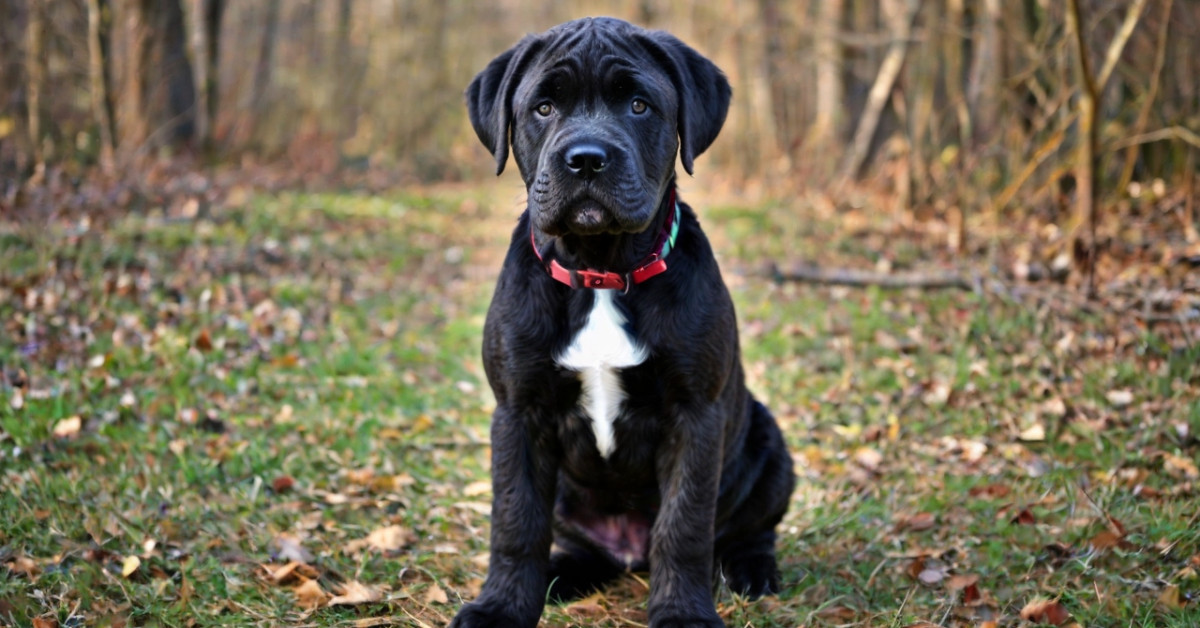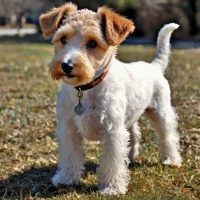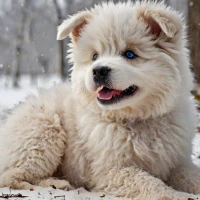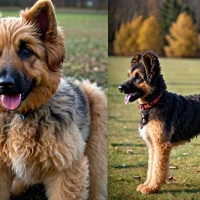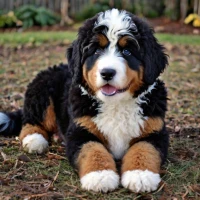My Experience with Canoodles: The Cane Corso Poodle Mix
One fine Sunday morning, as the sun was just starting to peek through the curtains, I found myself in the midst of a rather pleasant chaos. My two sons, Greg and Oliver, were chasing our latest family member—a buoyant Canoodle puppy named Max. Completely mesmerized by the whole scenario, I thought to myself, “How did we end up with such an extraordinary mix?” Let me take you on a little journey through the fascinating world of Canoodles, or as some prefer to call them, Cane Corso Poodles.
The Origins of the Canoodle
If you’ve never heard of a Canoodle, you might be wondering, “What’s the deal with this breed?” Well, the Canoodle is a delightful mix between two very distinct breeds: the Cane Corso and the Poodle. Just imagine a burly yet elegant dog that combines the muscular build and protective nature of the Cane Corso with the intelligence and hypoallergenic coat of a Poodle. Isn’t that just fascinating?
Did you know that the term “Canoodle” actually encompasses various mixes involving Poodles, like Labradoodles and Goldendoodles? But I digress. The Cane Corso, hailing from Italy, is known for its guardian instincts, while the Poodle has its origins in Germany and France, excelling in agility and intelligence. These two breeds, when combined, produce a dog with an extraordinarily unique set of characteristics.
Appearance and Physical Attributes
You might be curious about how a Canoodle looks. Honestly, there’s no one-size-fits-all here—this breed can vary widely. Max, for instance, has this incredible salt-and-pepper coat that’s both curly and coarse. It’s almost like you’re running your fingers through a peculiar mix of wool and silk. I’ve had friends exclaim, “He’s like a living, breathing teddy bear!”
The size of a Canoodle can range quite a bit. Some end up being as large as their Cane Corso parent, weighing around 100 pounds, while others remain more petite like a Standard Poodle. It’s like opening a box of assorted chocolates every time you meet a new Canoodle—each one is a delightful surprise.
Temperament and Behavior
From my experience, Canoodles are exceptionally well-behaved, provided they’re properly trained. Max is no exception. He’s protective yet incredibly affectionate. The other day, while I was gardening, he perched himself nearby, his eyes constantly scanning the surroundings as if to say, “Mom, I got your back!”
Canoodles are known for their loyalty and intelligence. Training Max was a breeze compared to other breeds I’ve dealt with. We enrolled him in a puppy training class, and I have to say, he was the star student. Moreover, they are highly social animals—Greg and Oliver have made it their mission to invite all their friends over just to meet Max, who naturally loves all the attention.
Health and Wellness
Ah, the dreaded vet visits. But let me tell you, maintaining a Canoodle’s health is easier than you might think. These pups are generally robust but can be prone to certain genetic conditions inherited from both parent breeds. Hip dysplasia and certain eye conditions, for instance, are something to watch out for. It’s essential to get regular check-ups—a stitch in time saves nine, after all.
One unique trait that I find fascinating is their hypoallergenic coat, a gift from their Poodle lineage. If you or your family struggles with allergies, a Canoodle might just be the perfect companion. I’ve had friends with severe allergies come over, and no one’s sneezed yet!
Grooming Needs
Let’s talk grooming, shall we? Given their Poodle heritage, Canoodles often have curly coats that require regular grooming to prevent matting. Now, I’m no expert with scissors, so I usually take Max to a professional groomer. However, if you’re more of a DIY person, brushing your Canoodle every other day should suffice.
Cleaning Max’s ears regularly is a must to avoid infections, and those nails—boy, do they grow fast! I’ve learned the hard way that neglecting them can lead to some fancy new scratches on the hardwood floors.
Exercise and Activity Levels
Max is an energetic bundle of joy. A Canoodle typically needs a fair amount of exercise to stay happy and healthy. Daily walks, some playtime in the yard, and occasional trips to the dog park usually do the trick. One brisk winter morning, we decided to take him to the local dog park. You should have seen the joy on his face as he bounded through the snow!
Remember, though, these dogs are highly intelligent. Mental stimulation is just as important as physical activity. Puzzle toys, agility training, and interactive games can keep your Canoodle’s mind sharp. We’ve introduced Max to some treat-dispensing toys, and he spends hours figuring them out.
Nutrition and Feeding
On to a topic close to every pup parent’s heart—food! Canoodles thrive on a balanced diet rich in proteins, fats, and essential nutrients. Given their size and energy levels, I feed Max a diet formulated for large, active breeds. However, each dog is unique, so it’s always a good idea to consult your vet to tailor a diet specific to your Canoodle’s needs.
I occasionally treat Max to some homemade dog biscuits, and he absolutely loves them. Just be cautious about overfeeding—it’s easy to spoil these adorable furballs, but obesity can pose serious health risks.
Socialization and Interaction
Canoodles are social butterflies—well, dogs. Early socialization is crucial to help them grow into well-rounded adults. Max benefited greatly from puppy playdates and trips to busy, people-filled areas. The exposure helped curb any potential anxiety and instilled a sense of confidence in him.
My neighbor, who owns a Golden Doodle, once mentioned how Max resembles a mini bodyguard during our walks. Despite his imposing stance, he plays so gently with smaller dogs and children. It’s endearing, really.
Enjoying Life with a Canoodle
Life with a Canoodle is an endless adventure. Whether it’s their goofy antics, unwavering loyalty, or the gentle nuzzles they give, it’s impossible not to fall in love with these mixed-breed marvels. There’s a certain magic in watching Max grow and integrate into our family fabric.
Lastly, here’s a random fact for you—did you know Canoodles can excel in therapy work? Their calm temperament and affectionate nature make them perfect candidates. So, if you’re considering a dog that can double as a therapy pet, a Canoodle might just be the right choice.
Training and Commands
Training Max has been an enjoyable venture for our family. His sharp intellect, thanks to his Poodle genes, makes him quick to learn commands. Starting with simple “sit” and “stay” commands, we’ve moved on to more complex tricks like weaving through legs and fetching specific toys by name. Have you ever tried teaching a dog to differentiate between a ball and a frisbee? It’s delightfully entertaining!
We use positive reinforcement techniques, and let me tell you, a little treat goes a long way. Max responds exceptionally well to praise and the occasional cheese cube. Training sessions double as bonding time, making them all the more worthwhile.
Common Behavioral Traits
Here’s something interesting—Canoodles can inherit a wide range of behavioral traits from their parent breeds. Max, for example, exhibits the protectiveness of a Cane Corso and the playfulness of a Poodle. This mix can sometimes be a bit of a juggling act. There was this time when a mailman sparked his guarding instincts; however, a quick “It’s okay, Max!” was enough to calm him.
Balancing these traits involves patience and understanding. It’s all about recognizing when to nurture their playful side and when to address their protective tendencies. With consistent training, it’s entirely manageable.
Max’s Quirky Traits
Max has some truly unique quirks that never fail to make us laugh. He has this habit of tilting his head whenever he’s trying to understand a new word or command. Picture his floppy ears swaying with each tilt—adorable, right? Also, he’s developed a fascination with water, constantly pawing at his water bowl and creating little puddles.
I swear, he’s convinced that the water bowl is a miniature swimming pool. At least he keeps our floors cleaned regularly! Have your Canoodle puppies displayed any quirky traits? I’d love to hear about them.
Challenges and Solutions
Owning a Canoodle isn’t all sunshine and rainbows; challenges are bound to arise. One major challenge we faced was Max’s initial reluctance to crate training. He’d howl and whine, breaking our hearts. But, through patience and consistency, we turned the crate into his cozy little den—a safe haven instead of a prison.
The key is to associate the crate with positive experiences. Placing his favorite blanket and a chew toy inside worked wonders. Gradually, he started retreating to the crate voluntarily, giving him a quiet space to unwind.
The Joy of Adoption
Adopting a Canoodle can be incredibly rewarding. We found Max through a reputable breeder, but adoption is also a fantastic option. There are numerous rescue organizations specializing in mixed breeds, including Canoodles. Adopting not only gives a dog a second chance but also spreads awareness about responsible pet ownership.
It’s heartwarming to think about the difference you can make in a dog’s life. There are countless Canoodles waiting for loving homes, ready to shower you with unconditional love.
Overall, Living with a Canoodle
In closing, living with a Canoodle like Max has been a joyful, enriching experience. These dogs are a perfect blend of strength and intelligence, loyalty and playfulness. They seamlessly fit into various types of homes—whether you’re a single individual or a family with children. Their versatility and loving nature make them an excellent choice for any pet lover.
Thank you for joining me on this journey through the world of Canoodles. If you have any questions or stories to share about your own Canoodle, drop them in the comments below. Remember, sharing is caring! 😊
And as I always say, “A dog is not just a pet; it’s family!” 🐾
